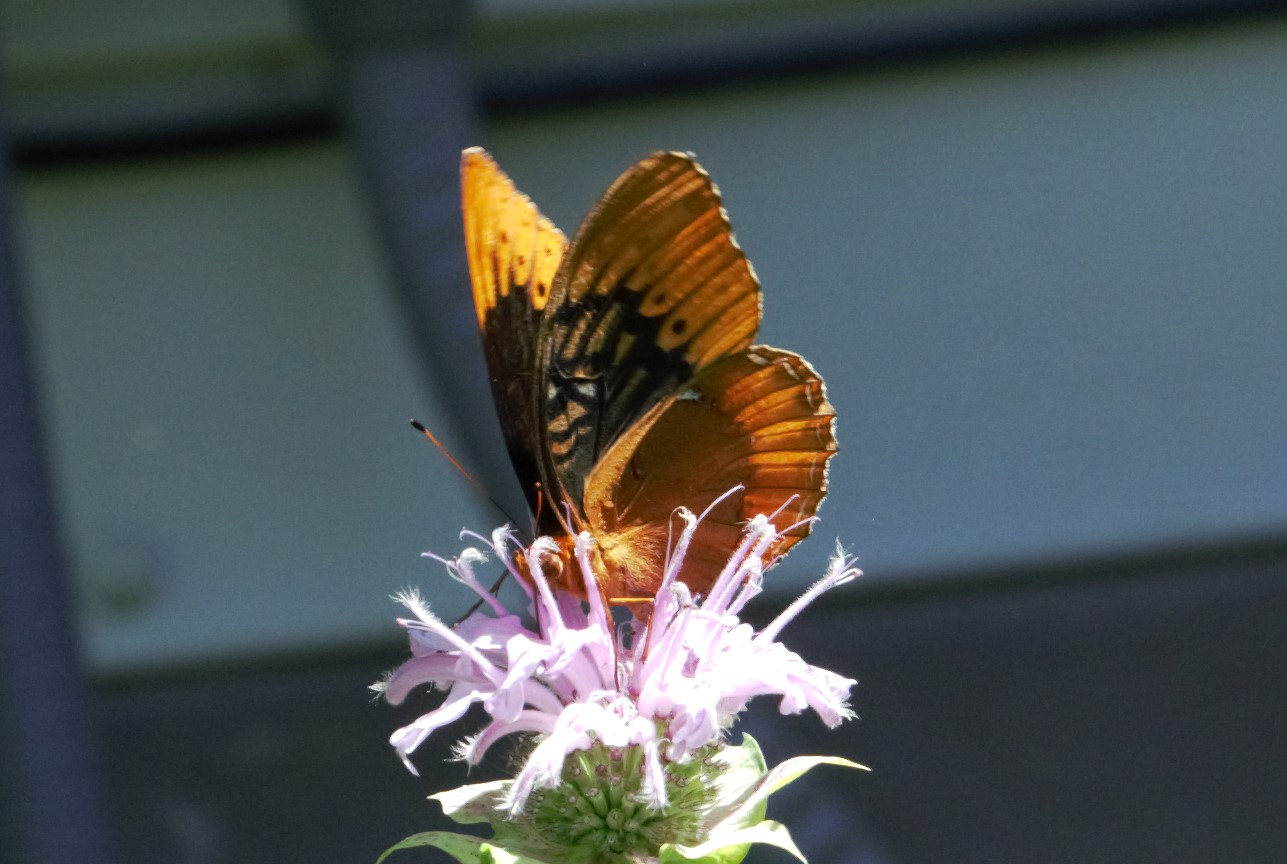Treefrogs are cool, but complicated
Views: 644
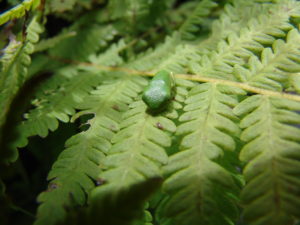
I’ve wanted to write about treefrogs for a while, but the topic is a bit intimidating. I love hearing them at dusk, often starting with a single frog in a tree or shrub, then spreading like a fire to other shrubs and other trees all around me until the sound is thrumming so loud I can feel it. It’s fun to find them plastered to a window at night, hunting the insects attracted to the lights inside, or peeking out from a potted plant that gets watered frequently, making it an attractive hideout. So, treefrogs are cool, but they’re also complicated, which is why I have hesitated to write about them.
Treefrog or tree frog?
The first complication is how to spell “treefrog.” About half the sources I looked at call them tree frogs, two words, while the other half calls them treefrogs, one word. Even reliable sources differ. For example, my Audubon field guide calls them treefrogs, but the National Wildlife Federation calls them tree frogs. I will split the difference. For the first half of this article, I will skip the space. For the second half, I’ll include it. This way, I’ll keep each treefrog/tree frog camp happy for at least half my blog.
Treefrogs are chameleons, so colors may vary, even among the same species
With 26 species found in North America, many with overlapping ranges, I am never sure if I have gray treefrogs (Hyla versicolor) or Cope’s gray treefrogs (Hyla chrysoscelis). Supposedly, the main difference between these two species is their call. Or, in some locations, they might be squirrel treefrogs (Hyla squirella) camouflaging themselves in gray because their surroundings are gray. And are my green treefrogs just the green versions of gray treefrogs, or are they actually green treefrogs (Hyla cinereal), which might be in my area because they’ve been spotted in nearby counties? Some treefrogs change color to match their surroundings, so you can’t always rely on color to make the identification.
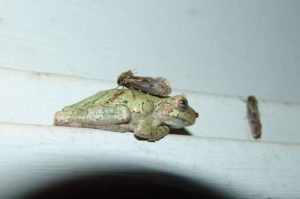
Even though this treefrog has a greenish color to it, it is probably a gray treefrog, Hyla versicolor. The thing on its back is a moth. So, it is just sitting there with dinner on top.
Some members of the tree frog family are not arboreal
Then there is this: not all tree frogs hang out in trees. In fact, chorus frogs, cricket frogs, and spring peepers are all members of the tree frog family, Hylidae. Scientists group tree frogs together because the last bone in their toes is claw-shaped. They’re also small, and they have toe pads that help them climb (and conveniently stick to windows).
Anyway, tree frogs can be difficult to identify. Based on songs, the common ones in my yard are probably common gray tree frogs, but my choices are limited. I can’t imagine trying to identify a tree frog in Florida, a state with a million different tree frog species, many of which look fairly similar.
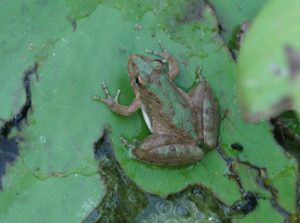
This Blanchard’s cricket frog is a member of the treefrog family even though it isn’t arboreal.
Random tree frog facts
Tree frogs mostly eat insects (mine are especially fond of moths attracted to my back porchlight) and other small invertebrates. Birds, snakes, and other predators eat them. They are beneficial wildlife for both reasons.
Some tree frogs hatch as tiny adults. Others follow the more classic progression of egg->tadpole->frog.
Lifespans vary by species, but my grays can live five to nine years.
There are 800 tree frog species worldwide.
They breathe through their skin. This makes them very susceptible to pollution and environmental toxins. Amphibians in general are at high risk from climate change and other pressures on their habitats. Because of this, they are disappearing from some areas. If you are lucky enough to have tree frogs, enjoy their presence, whether they are singing from a pond, ditch, tree, or shrub, or just stuck to your window at night.
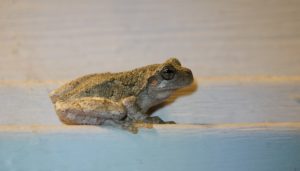
Some treefrogs are disappearing because of habitat destruction, pollution, and climate change.
Meet Leslie Miller
Leslie Ann Miller shares 3.5 acres in rural Oklahoma with birds, butterflies and wide variety of animals. She is currently transforming her yard with plantings…
Leslie's Recent Posts
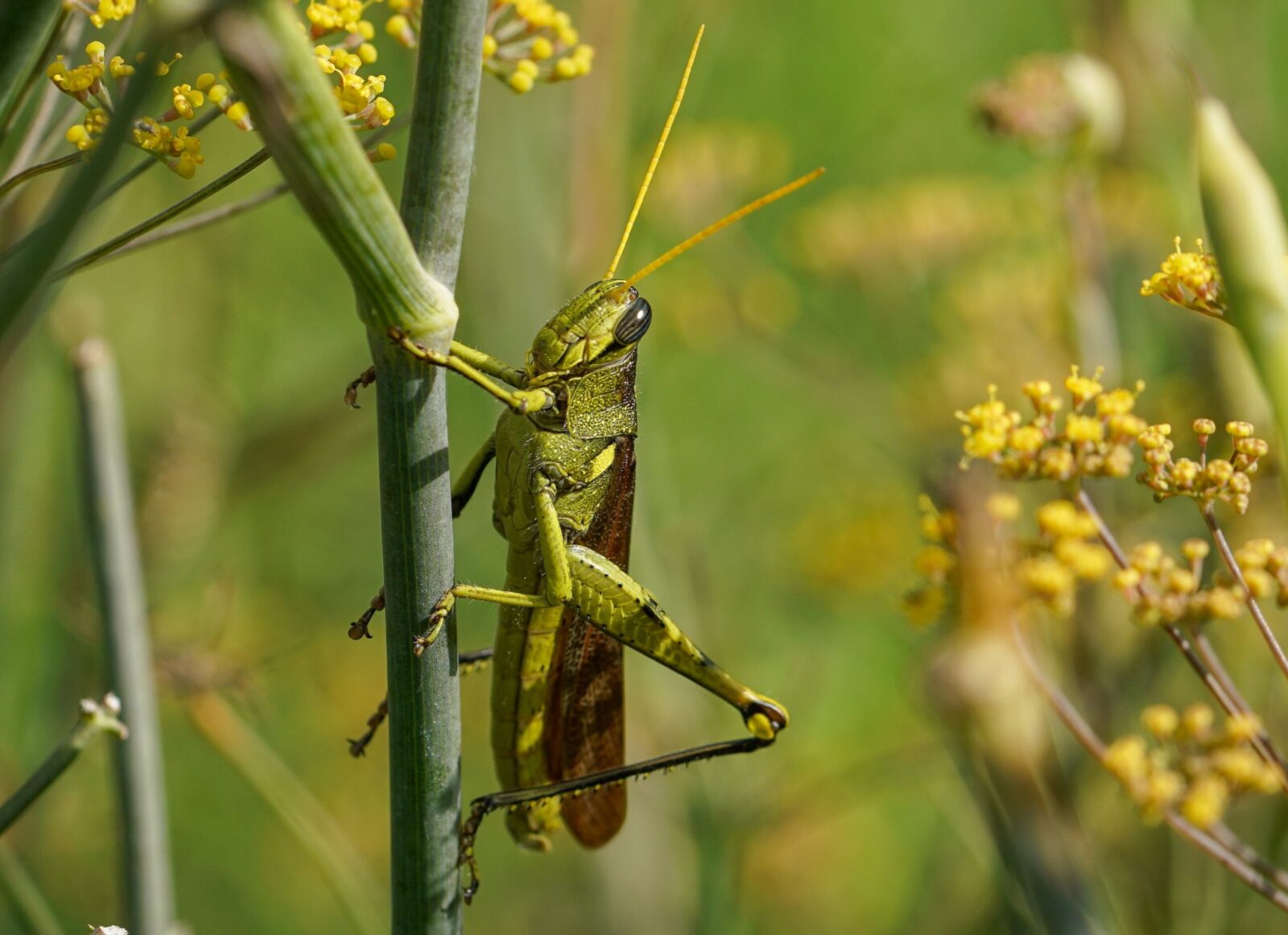
Grasshoppers and how to control them
